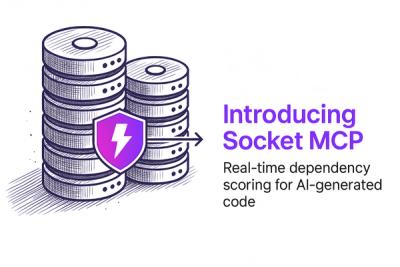What is selderee?
The selderee npm package is a tool for processing and transforming selectors. It allows you to parse CSS selectors and then make decisions based on the structure of those selectors. It can be used to filter, modify, or otherwise manipulate selectors programmatically.
What are selderee's main functionalities?
Parsing and transforming selectors
This feature allows you to parse CSS selectors and apply transformations to them. The code sample demonstrates how to create a transformer function that processes a selector and returns it unchanged.
const { builder } = require('selderee');
const myTransformer = builder((decisionMap) => {
decisionMap.default(decision => decision.selector);
});
const transformedSelector = myTransformer.transform('.my-class > .my-element');
Custom decision functions
This feature enables you to define custom decision functions for specific types of selectors. In the code sample, a decision function is defined to replace 'div' tags with the class '.replaced-div'.
const { builder } = require('selderee');
const myTransformer = builder((decisionMap) => {
decisionMap.onTag('div', () => '.replaced-div');
decisionMap.default(decision => decision.selector);
});
const transformedSelector = myTransformer.transform('div > .my-element');
Other packages similar to selderee
postcss-selector-parser
postcss-selector-parser is a parser for CSS selectors that allows you to traverse and manipulate selectors. It is similar to selderee in that it provides a way to work with CSS selectors, but it is built on top of PostCSS and is more focused on the parsing and manipulation of selectors within the PostCSS ecosystem.
css-what
css-what is a simple CSS selector parser. It can parse selectors into an abstract syntax tree (AST) but does not include the decision map feature that selderee offers. It is more lightweight and less feature-rich compared to selderee.
selderee




Selectors decision tree - pick matching selectors, fast.
What is it for
The problem statement: there are multiple CSS selectors with attached handlers, and a HTML DOM to process. For each HTML Element a matching handler has to be found and applied.
The naive approach is to walk through the DOM and test each and every selector against each Element. This means O(n*m) complexity.
It is pretty clear though that if we have selectors that share something in common then we can reduce the number of checks.
The main selderee package offers the selectors tree structure. Runnable decision functions for specific DOM implementations are built via plugins.
Limitations
- Pseudo-classes and pseudo-elements are not supported by the underlying library parseley (yet?);
- General siblings (
~), descendants ( ) and same column combinators (||) are also not supported.
selderee vs css-select
css-select - a CSS selector compiler & engine.
Support for htmlparser2 DOM AST | plugin | + |
| "Compiles" into a function | + | + |
| Pick selector(s) for a given Element | + | |
| Query Element(s) for a given selector | | + |
Packages
Install
> npm i selderee @selderee/plugin-htmlparser2
Documentation
Usage example
const htmlparser2 = require('htmlparser2');
const util = require('util');
const { DecisionTree, Treeify } = require('selderee');
const { hp2Builder } = require('@selderee/plugin-htmlparser2');
const selectorValuePairs = [
['p', 'A'],
['p.foo[bar]', 'B'],
['p[class~=foo]', 'C'],
['div.foo', 'D'],
['div > p.foo', 'E'],
['div > p', 'F'],
['#baz', 'G']
];
const selectorsDecisionTree = new DecisionTree(selectorValuePairs);
const prettyTree = selectorsDecisionTree.build(Treeify.treeify);
console.log(prettyTree);
const html = `<html><body>
<div><p class="foo qux">second</p></div>
</body></html>`;
const dom = htmlparser2.parseDocument(html);
const element = dom.children[0].children[0].children[1].children[0];
const picker = selectorsDecisionTree.build(hp2Builder);
const allMatches = picker.pickAll(element);
console.log(util.inspect(allMatches, { breakLength: 70, depth: null }));
const bestMatch = picker.pick1(element);
console.log(`Best matched value: ${bestMatch}`);
Example output
▽
├─◻ Tag name
│ ╟─◇ = p
│ ║ ┠─▣ Attr value: class
│ ║ ┃ ╙─◈ ~= "foo"
│ ║ ┃ ┠─◨ Attr presence: bar
│ ║ ┃ ┃ ┖─◁ #1 [0,2,1] B
│ ║ ┃ ┠─◁ #2 [0,1,1] C
│ ║ ┃ ┖─◉ Push element: >
│ ║ ┃ └─◻ Tag name
│ ║ ┃ ╙─◇ = div
│ ║ ┃ ┖─◁ #4 [0,1,2] E
│ ║ ┠─◁ #0 [0,0,1] A
│ ║ ┖─◉ Push element: >
│ ║ └─◻ Tag name
│ ║ ╙─◇ = div
│ ║ ┖─◁ #5 [0,0,2] F
│ ╙─◇ = div
│ ┖─▣ Attr value: class
│ ╙─◈ ~= "foo"
│ ┖─◁ #3 [0,1,1] D
└─▣ Attr value: id
╙─◈ = "baz"
┖─◁ #6 [1,0,0] G
[ { index: 2, value: 'C', specificity: [ 0, 1, 1 ] },
{ index: 4, value: 'E', specificity: [ 0, 1, 2 ] },
{ index: 0, value: 'A', specificity: [ 0, 0, 1 ] },
{ index: 5, value: 'F', specificity: [ 0, 0, 2 ] } ]
Best matched value: E
Some gotcha: you may notice the check for #baz has to be performed every time the decision tree is called. If it happens to be p#baz or div#baz or even .foo#baz - it would be much better to write it like this. Deeper, narrower tree means less checks on average. (in case of .foo#baz the class check might finally outweigh the tag name check and rebalance the tree.)
Development
Targeting Node.js version >=14.
Monorepo uses NPM v7 workspaces (make sure v7 is installed when used with Node.js v14.)







